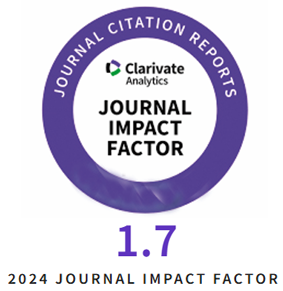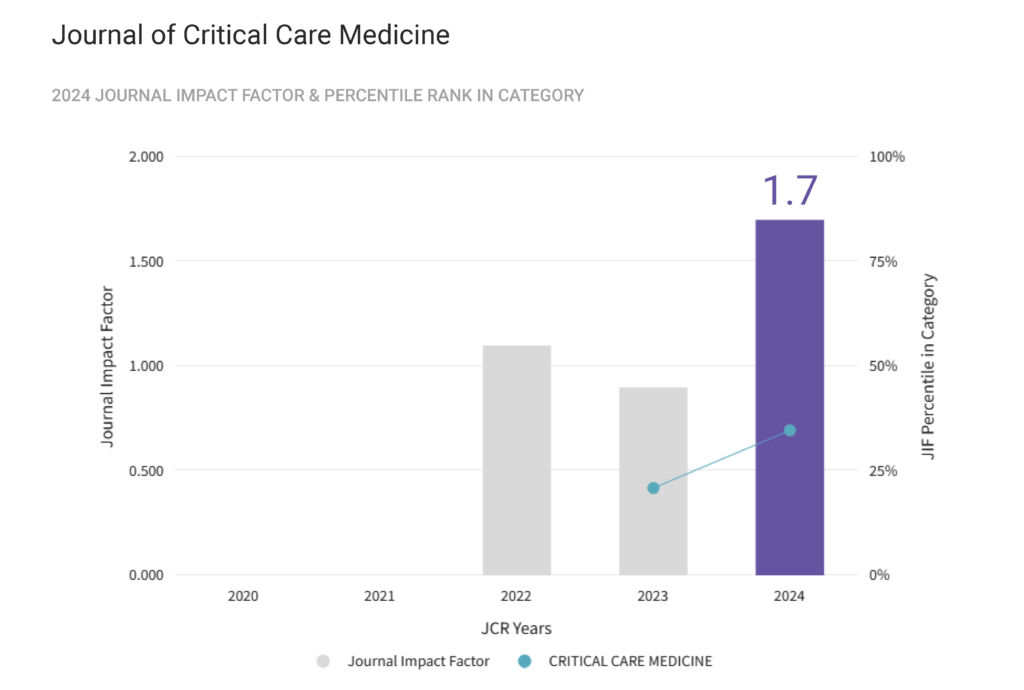Introdution: Takotsubo cardiomyopathy is a rare reversible type of heart failure, often precipitated by emotional stress; other risk factors include intracranial bleeding, ischemic stroke, sepsis, major surgery, pheochromocytoma. The clinical, electrical and blood sample analysis features resemble those of a myocardial infarction- however, they occur in the absence of angiographic coronary filling defects.
Case presentation: A 61-year-old male patient, 71 kg, 175 cm, underwent liver transplantation for Child-Pugh B cirrhosis secondary to mixed viral hepatitis (B and D). His medical records revealed mild mitral, aortic, and tricuspid insufficiencies and heart failure with preserved ejection fraction. An initially uneventful perioperative stage was succeeded by cardiogenic shock (cardiac index – 1.2 l/min/sqm), which the patient developed 24 hours after the intervention. Elevated cardiac markers and ECG abnormalities showing ST-T changes in the V2-V5 leads were additionally noted. Transesophageal echocardiography (TEE) revealed an acute onset reduction in the left ventricular systolic function secondary to basal hypokinesia. No coronary obstruction was detected by percutaneous angiography. The above findings lead to the diagnosis of reverseTakotsubo cardiomyopathy. Further, the patient developed acute kidney injury and liver graft failure, succumbing within 48 hours after the surgical procedure.
Conclusions: We report a rare case of reverse Takotsubo cardiomyopathy in a male patient after orthotopic liver transplant.
Category Archives: Case Report
COVID-19 Infection or Buttock Injections? The Dangers of Aesthetics and Socializing During a Pandemic
Introduction: Silicone (polydimethylsiloxane) injections are used for cosmetic augmentation. Their use is associated with life-threatening complications such as acute pneumonitis, alveolar hemorrhage, and acute respiratory distress among others [1,2]. We report a case of a Hispanic woman who developed severe respiratory distress syndrome after gluteal silicone injections.
Case Presentation: A 44-year-old Hispanic female presented to the Emergency Department complaining of progressive dyspnea on exertion for two weeks. Chest imaging revealed patchy bibasilar airspace opacities of peripheral distribution. Labs were significant for leukocytosis, elevated PT, D-dimer, lactate dehydrogenase, and fibrinogen, concerning for COVID-19, however SARS-CoV-2 testing was negative multiple times. The patient later became encephalopathic, hypoxemic, and eventually required intubation. Further history uncovered that the patient had received illicit gluteal silicone injections a few days prior to her onset of symptoms. The patient was diagnosed with silicone embolism syndrome (SES) and initiated on high dose intravenous methylprednisolone [1].
Case Discussion: Patients from lower socioeconomic backgrounds utilize illicit services to receive silicone injections at minimal costs. This leads to dangerous outcomes. The serology and imaging findings observed in our case have similarities to the typical presentation of COVID-19 pneumonia making the initial diagnosis difficult. This case serves as a cautionary tale of the importance of thorough history taking in patients with concern for COVID-19.
Pheochromocytoma, Fulminant Heart Failure, and a Phenylephrine Challenge. The Perioperative Management of Adrenalectomy in a Jehovah’s Witness Patient: A Case Report
Perioperative management of pheochromocytoma in the setting of catecholamine-induced heart failure requires careful consideration of hemodynamic optimization and possible mechanical circulatory support. A Jehovah’s Witness patient with catecholamine-induced acutely decompensated heart failure required dependable afterload reduction for a cardio-protective strategy. This was emphasized due to the relative contraindication to perioperative anticoagulation required for mechanical circulatory support. A phenylephrine challenge clearly demonstrated adequate alpha blockade after only 24 hours of phenoxybenzamine treatment. This resulted in advancement of the surgery date. This case also highlights management of beta blockade, volume and salt loading, autologous blood transfusion, and profound post-operative vasoplegia in the setting of cardiogenic shock. Careful attention to hemodynamic optimization and cardio-protective strategies ultimately resulted in positive outcome for this challenging clinical scenario.
Plasmapheresis in the Treatment of Refractory Myoclonic Status. A Case Report
A case of myoclonic status treated with plasmapheresis in a patient of 63 years of age who was admitted to a Spanish intensive care unit is reported. The patient showed clinical and radiological evidence of severe acute respiratory syndrome coronavirus 2 (SARS-CoV-2) infection; molecular tests did not verify this.
Methanol Poisoning Leading to Brain Death: A Case Report
Introduction: The COVID-19 pandemic has put increased stress on medical systems, infrastructure, and the public in expected and unexpected ways. This case report summarises an unexpected case of methanol poisoning from hand sanitiser ingestion due to changes in industry regulations, increased demand for cleaning products and severe psychosocial stressors brought on by the pandemic. Severe methanol toxicity results in profound metabolic disturbances, damage to the retina and optic nerves, and potentially death.
Case Presentation: The patient was a 26-year-old male with alcohol use disorder who presented with one day of nausea, vomiting, and abdominal pain after consuming hand sanitiser. Within a few hours, the patient had suffered multiple seizures, cardiac arrests and required admission to the ICU for emergent management of methanol poisoning. EEG and brain perfusion imaging were performed to confirm brain death, given concerns about the cranial nerve exam after methanol poisoning.
Conclusions: While rare, methanol toxicity remains a potentially fatal poisoning in the United States and worldwide. When healthcare and public resources are strained, healthcare professionals must consider particularly abnormal presentations. In patients suspected of brain death from methanol toxicity, cranial nerve examination may be unreliable. Therefore, additional testing is necessary to confirm brain death.
The Use of Inhaled Epoprostenol for Acute Respiratory Distress Syndrome Secondary due to COVID-19: A Case Series
Introduction: Inhaled epoprostenol (iEpo) is a pulmonary vasodilator used to treat refractory respiratory failure, including that caused by Coronavirus 2019 (COVID-19) pneumonia.
Aim of Study: To describe the experience at three teaching hospitals using iEpo for severe respiratory failure due to COVID-19 and evaluate its efficacy in improving oxygenation.
Methods: Fifteen patients were included who received iEpo, had confirmed COVID-19 and had an arterial blood gas measurement in the 12 hours before and 24 hours after iEpo initiation.
Results: Eleven patients received prone ventilation before iEpo (73.3%), and six (40%) were paralyzed. The partial pressure of arterial oxygen to fraction of inspired oxygen (P/F ratio) improved from 95.7 mmHg to 118.9 mmHg (p=0.279) following iEpo initiation. In the nine patients with severe ARDS, the mean P/F ratio improved from 66.1 mmHg to 95.7 mmHg (p=0.317). Ultimately, four patients (26.7%) were extubated after an average of 9.9 days post-initiation.
Conclusions: The findings demonstrated a trend towards improvement in oxygenation in critically ill COVID-19 patients. Although limited by the small sample size, the results of this case series portend further investigation into the role of iEpo for severe respiratory failure associated with COVID-19.
A Case of Self-salvation in a Determined Chloroquine Suicide Attempt
This report concerns a young man who attempted suicide by ingesting a cocktail with a lethal dose of chloroquine phosphate and large amounts of diazepam. On presentation, the patient was drowsy, unresponsive and in cardiogenic shock with severely impaired left ventricular function. Active charcoal and vasopressors were administered, and despite his intoxication with diazepam, a high-dose diazepam treatment was initiated in the hospital. It is concluded that diazepam in the cocktail played a vital role in the survival of this patient. With a rise in numbers, every emergency and intensive care physician should be familiar with chloroquine poisoning.
Hypercoagulopathy in Overweight and Obese COVID-19 Patients: A Single-Center Case Series
A case series is presented of five overweight or obese patients with confirmed coronavirus disease 2019 (COVID-19) in South Miami, Florida, United States. A multitude of coagulation parameters was suggestive of a hypercoagulable state among the hospitalized COVID-19 patients. This article reports various manifestations of hypercoagulable states in overweight and obese patients, such as overt bleeding consistent with disseminated intravascular coagulation, venous thromboembolism, gastrointestinal bleeding as well as retroperitoneal hematoma. All of the required admission to the intensive care unit and subsequently patients died. The characteristics of COVID-19-associated coagulopathy are atypical and warrant a further understanding of the pathophysiology to improve clinical outcomes, specifically in overweight or obese patients.
Severe Acute Motor Axonal Neuropathy Associated with Influenza-A (H1N1) Infection and Prolonged Respiratory Failure – A Case Report
Acute Motor Axonal Neuropathy (AMAN) is an immune-mediated disorder of the peripheral nervous system, part of the spectrum of the Guillain-Barre syndrome (GBS). An infectious event most often triggers it reported a few weeks before the onset. The reported case is of a 56 years-old woman who developed acute motor axonal neuropathy three weeks after respiratory infection with influenza A virus subtype H1N1. Despite early treatment with plasmapheresis and intravenous immunoglobulins, the patient remained tetraplegic, mechanically ventilated for five months, with repetitive unsuccessful weaning trails. The probable cause was considered to be phrenic nerve palsy in the context of acute motor axonal neuropathy. This case highlights that acute motor axonal neuropathy is a severe and life-threatening form of Guillain-Barre syndrome associated with significant mortality and morbidity. Neurological and physical recovery strongly depend on the inter-professional effort in an intensive care unit and neurology professionals.
Shock Due to an Obstructed Endotracheal Tube
Endotracheal tube obstruction by a mucus plug causing a ball-valve effect is a rare but significant complication. The inability to pass a suction catheter through the endotracheal tube with high peak and plateau pressure differences are classical features of an endotracheal tube obstruction. A case is described of endotracheal tube obstruction from a mucus plug that compounded severe respiratory acidosis and hypotension in a patient who simultaneously had abdominal compartment syndrome. The mucus plug was not identified until a bronchoscopic assessment of the airway was performed. Due to the absence of classical signs, the delayed identification of the obstructing mucus plug exacerbated diagnostic confusion. It resulted in various treatments being trialed whilst the patient continued to deteriorate from the evasive offending culprit. We suggest that earlier and more routine use of bronchoscopy should be employed in an intensive care unit, especially as a definitive way to rule out endotracheal obstruction.










